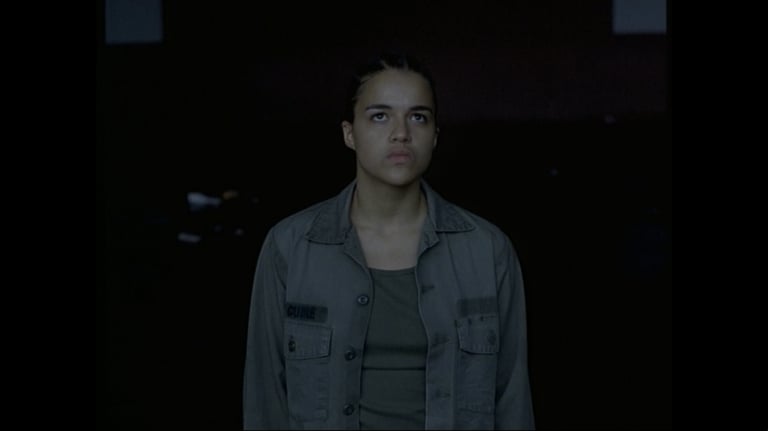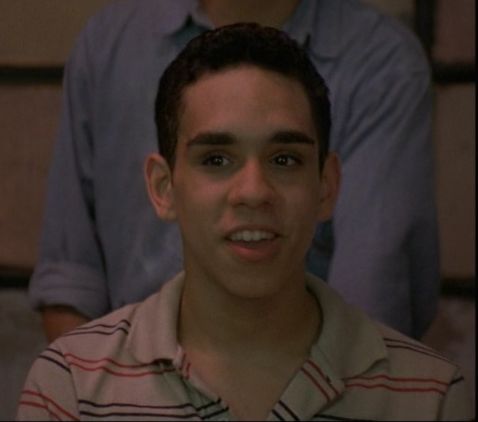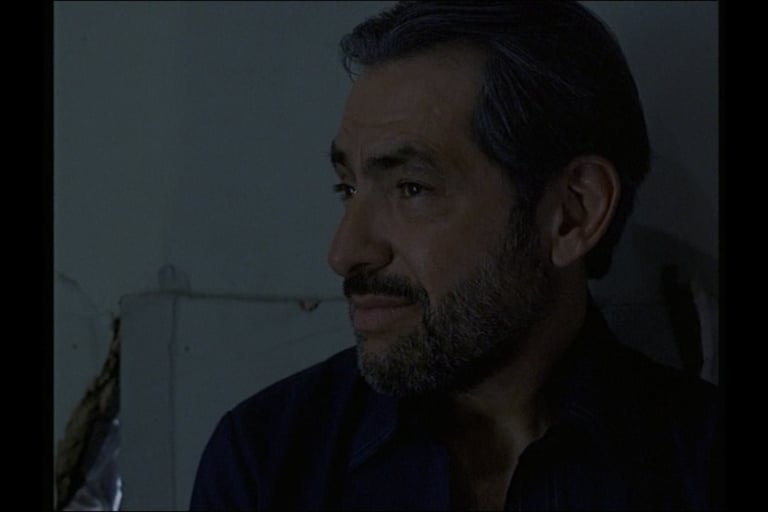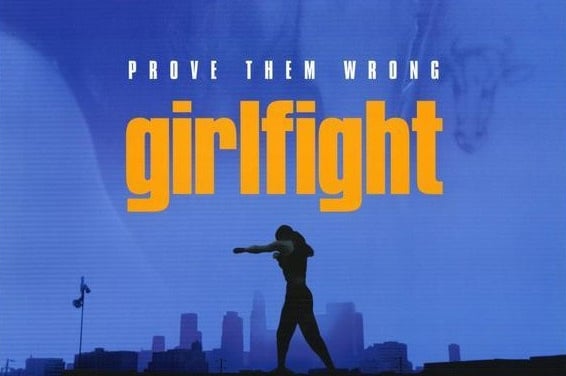Girlfight (2000): Challenging the Definition of Masculinity
Diana fights more than opponents in 'Girlfight.' Explore her battle against gender stereotypes in boxing, challenging the male gaze and examining the complexities of masculinity
3/1/20254 min read
Karyn Kusama's sports film Girlfight (2000) focuses on Diana Guzman's desire to become a boxer despite the gender stereotype. The film also investigates the audience's male gaze association through the characters like Hector Soto and Tiny Guzman using the continuum of gender representation and the film's visual cues.


Tiny Guzman represents a less masculine individual with geeky clothing during Diana's school hitting. The filmmaker shoots Tiny in a medium close-up shot emphasizing his facial expression of tiredness and speechlessness of Diana's aggressive behavior instead of stopping her using his body gesture. Later, the family eating scene suggests Tiny's less masculine by placing him to the left composition. The left and right placement refer to the "right versus wrong" ideology, which Tiny's left side represents his deviance from the father's expectation of masculinity. This composition clearly shows that Tiny's reluctance and passiveness are associated with the need for Diana's protection at home and the boxing gym. Lastly, although Tiny participates in boxing, his gym clothing is less muscular revealing than other male boxers, separating him from the male gaze.
In contrast, Hector Soto symbolizes a mature masculine individual by appearing as Diana's conscientious mentor. The close-up and point-of-view shots show Hector's facial expression with the glasses representing his rational characterization when Diana asks for training. With his cinematography choice, the audience can observe his objective facial expression when he says, "You just can't. Girls don't have the same power as boys." Furthermore, by setting the money limit for Diana, Hector's decision shows his open-mindedness toward gender-blinding boxing and his influence by the traditional male gaze. Hector's mentoring Diana portrays a paternal relationship in the film in that Hector always provides Diana technical and emotional support. The two-shot of Hector and Diana's conversation shows Diana's happiness after learning that she receives a boxing match ticket from Hector. However, this scene also indicates Hector's acceptance of women into the ring. Like Tiny, Hector does not wear a muscular revealing gym outfit, Hector expresses his masculinity through perceptual and behavioral maturity by treating Diana or other male boxers with his objective rules rather than the athletic appearance and aggressive behavior.
Expanding on these character representations, it's worth noting how Kusama uses the boxing ring itself as a microcosm of societal expectations and gendered power dynamics. The ring, traditionally a space of male dominance, becomes a battleground for Diana's assertion of her own agency. Her presence disrupts the established order, forcing the audience to confront their own preconceived notions about femininity and strength. The sweat, the bruises, and the raw physicality of the sport are not softened or romanticized; instead, they are presented with a stark realism that underscores Diana's determination to carve out her own space in a world that seeks to confine her.
The film's exploration of the male gaze extends beyond the characters of Tiny and Hector. It's woven into the very fabric of the narrative, challenging the audience to examine their own complicity in perpetuating gender stereotypes. The way Diana's body is framed, the reactions of the male spectators, and the subtle power dynamics within the gym all contribute to this exploration. Kusama doesn't offer easy answers or simplistic resolutions; instead, she presents a complex and nuanced portrayal of gender, power, and the struggle for self-definition.
Furthermore, Diana's journey is not just about physical strength; it's also about emotional and psychological resilience. Her anger, her frustration, and her vulnerability are all laid bare, revealing the human cost of challenging societal norms. The film doesn't shy away from depicting the emotional toll that Diana's pursuit of boxing takes on her relationships, particularly with her father and brother. It's a testament to Kusama's skill as a filmmaker that she manages to balance the raw intensity of the boxing scenes with the quieter, more intimate moments of Diana's personal life.
The film's ending, while offering a sense of triumph, is not a simple victory. It's a complex and ambiguous conclusion that leaves the audience pondering the long-term implications of Diana's choices. It's a reminder that the fight for gender equality is an ongoing struggle, a battle that requires constant vigilance and a willingness to challenge the status quo. Girlfight, in its raw and uncompromising portrayal of Diana's journey, serves as a powerful and enduring testament to the power of individual agency and the enduring relevance of feminist storytelling


Ray Santiago as Tiny Guzman


Jaime Tirelli as Hector Soto
Michelle Rodriguez as Diana Guzman

